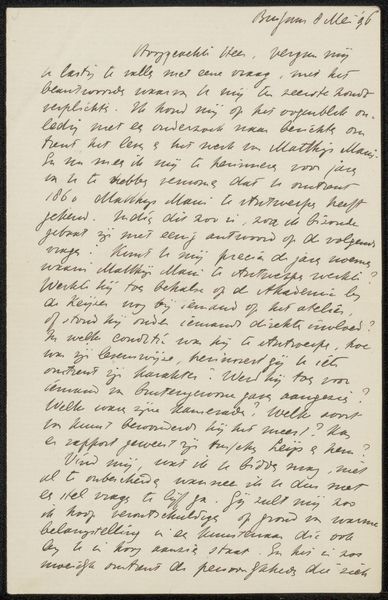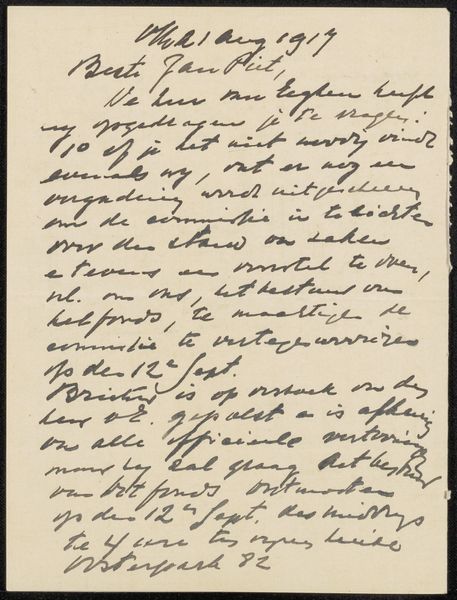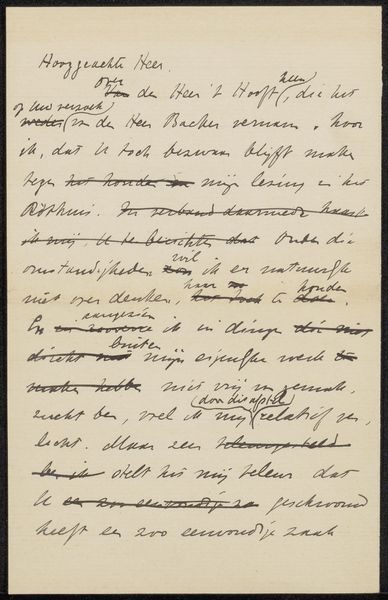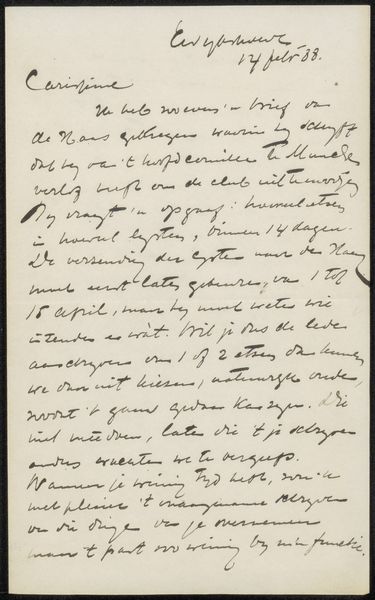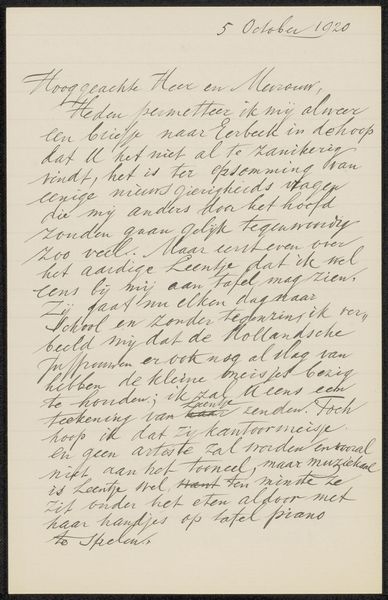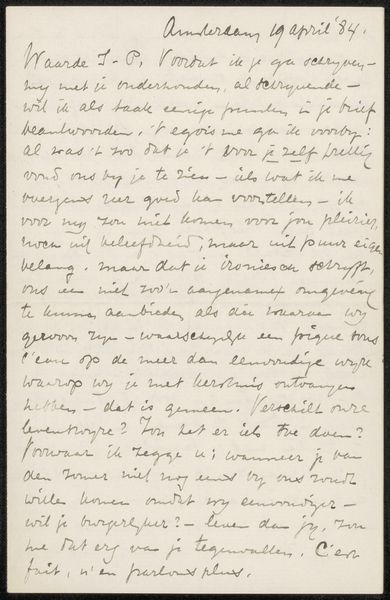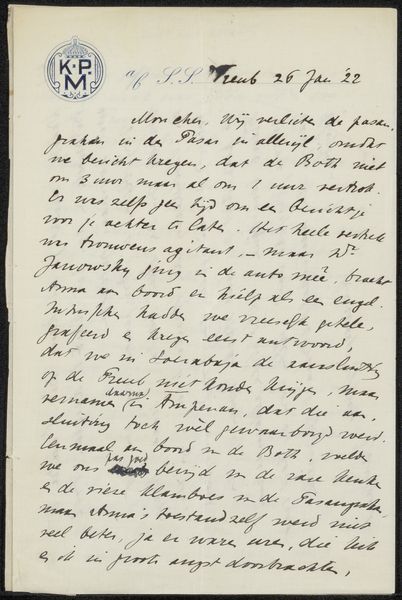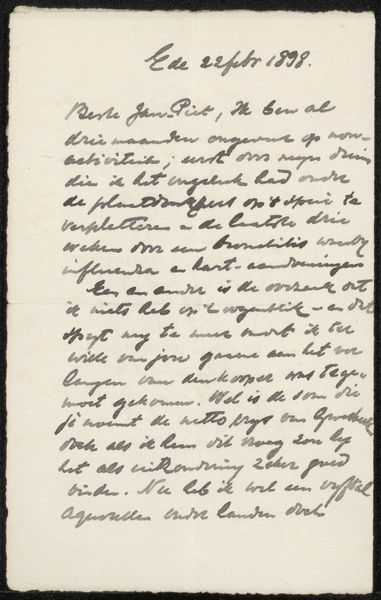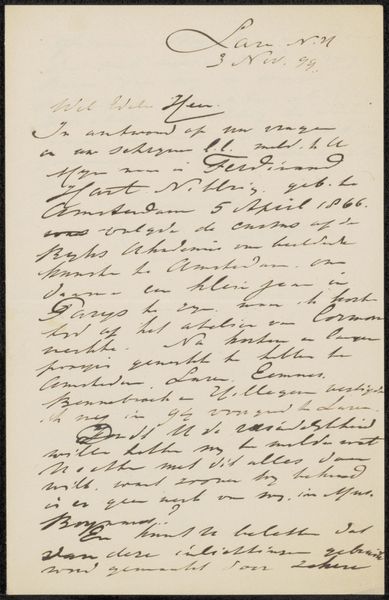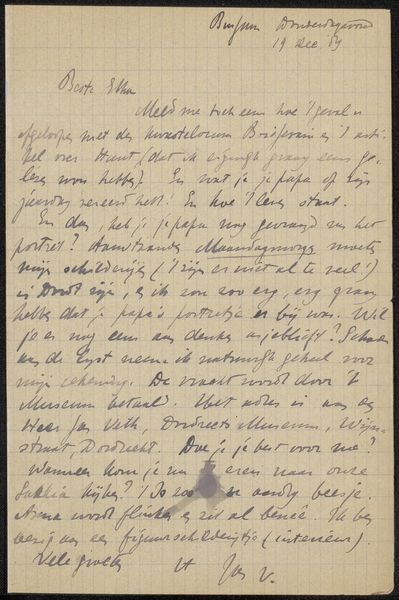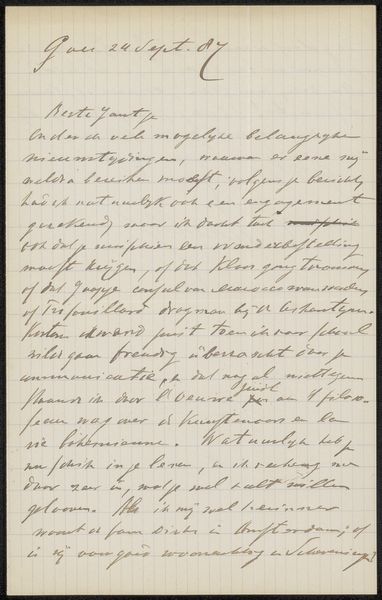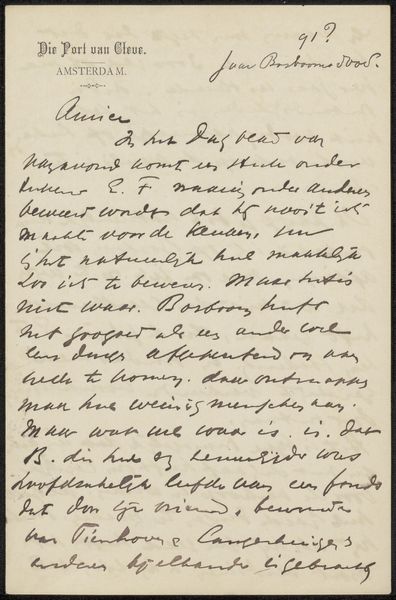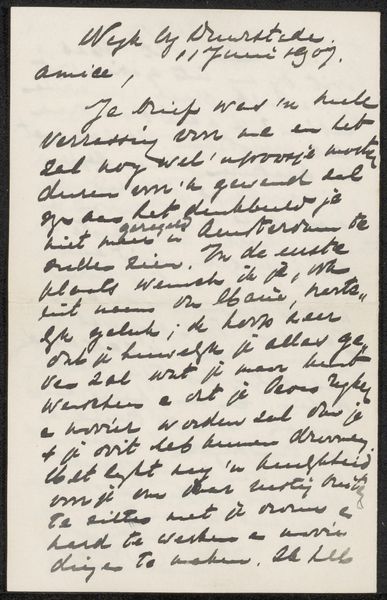
drawing, paper, ink, pen
#
drawing
#
ink paper printed
#
paper
#
ink
#
pen work
#
pen
Copyright: Rijks Museum: Open Domain
Editor: Here we have "Brief aan Jan Veth," or "Letter to Jan Veth," possibly from 1886, by Wally Moes. It appears to be pen and ink on paper. The handwriting is beautiful, but almost makes it seem like I'm looking at a secret code or personal document rather than something displayed in a museum. What catches your eye in this work? Curator: Beyond its aesthetic appeal, the handwritten letter is powerful precisely because of its inherent intimacy. Writing has long served as a vessel for human emotion and connection across time. This letter is more than ink on paper; it is a portal to Wally Moes' inner world. What recurring words or phrases do you notice? Editor: Well, I can see "Mama" and the words "duo bang" or "very afraid"...it makes me wonder what was going on when she wrote it! Curator: Indeed. Those words resonate with universal themes of familial concern and fear, anxieties that transcend time. Now, consider the act of handwriting itself, particularly in an era before typewriters were ubiquitous. Each stroke carries weight, reflecting not just thoughts but the writer’s physical and emotional state. How does that physicality alter your reading of it? Editor: I guess I see what you mean. It makes me feel almost like I’m invading someone's privacy. But also, the beautiful, looping handwriting has an elegance that contrasts with her being “very afraid,” which adds to its mystery. Curator: Precisely. The contrasting elegance and worry encapsulates a human complexity. This letter acts as a symbol of a moment frozen in time, prompting reflection on human emotions through visual language. Editor: I never thought about a simple letter having so much cultural information embedded in it! Curator: Me neither. But it makes you realize how much we can learn through examining art using varied lenses!
Comments
No comments
Be the first to comment and join the conversation on the ultimate creative platform.
